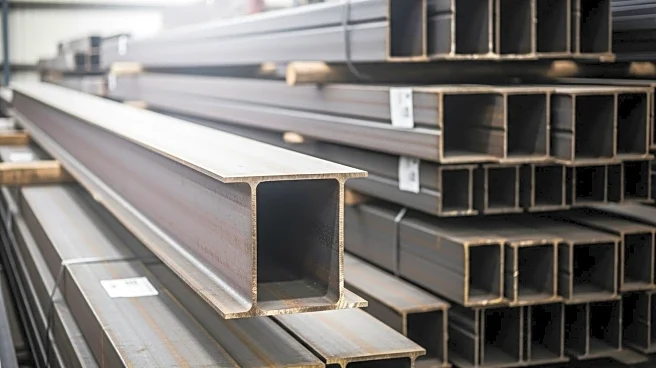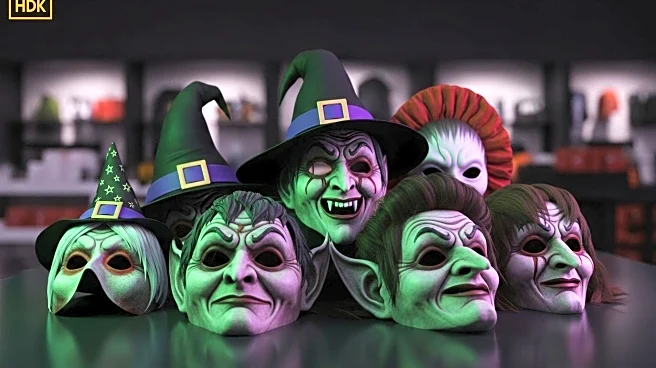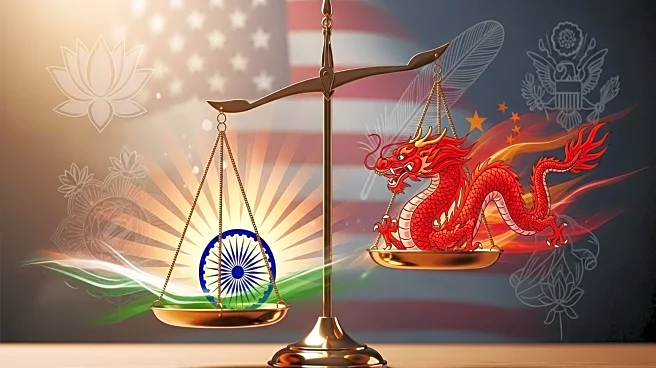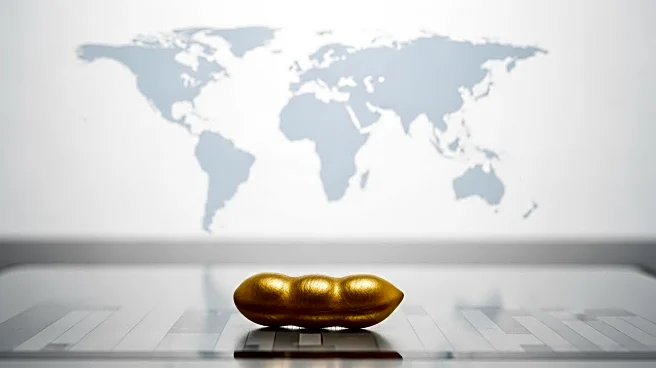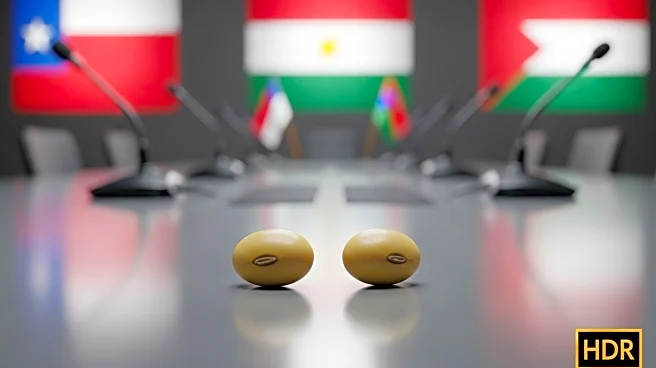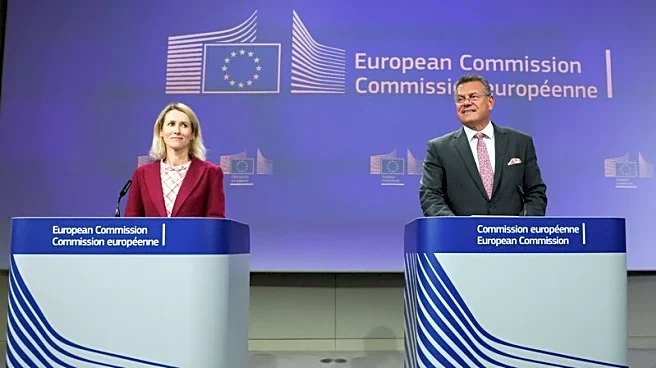What is the story about?
What's Happening?
The ongoing trade tensions between the United States and China have led to significant increases in tariffs on Chinese goods, affecting the Halloween costume industry. Since April, tariffs on these goods have surged from 20% to a peak of 145%, before being reduced to 30% in May. This has resulted in higher costs for manufacturers and retailers, with the National Retail Federation (NRF) predicting an average spend of $114.45 per shopper this Halloween, up $11 from the previous year. The tariffs have forced businesses like Chris Zephro's, which specializes in horror-themed products, to cut staff and pause production on certain items. Retailers are attempting to absorb some of the increased costs, but consumers are still expected to face higher prices, particularly for adult costumes.
Why It's Important?
The tariff increases are part of broader trade policies that aim to prioritize domestic production and reduce reliance on Chinese imports. However, these policies have placed a financial strain on small and mid-sized manufacturers who lack the resources to shift production domestically. The increased costs are being passed on to consumers, potentially reducing consumer spending and affecting the profitability of retailers during the Halloween season. This situation highlights the challenges faced by businesses in adapting to changing trade policies and the potential impact on consumer behavior and economic activity.
What's Next?
As the Halloween season approaches, retailers and manufacturers will need to navigate the increased costs and potential consumer pushback. Some businesses may explore alternative sourcing options outside of China to mitigate tariff impacts. Additionally, there may be increased pressure on policymakers to address the concerns of small businesses and consider adjustments to trade policies that could alleviate some of the financial burdens. The situation also underscores the need for strategic planning by businesses to adapt to evolving trade environments.
Beyond the Headlines
The tariff situation raises questions about the long-term viability of the 'America First' trade policy and its impact on various industries. While the policy aims to boost domestic production, the reality of regulatory and infrastructural barriers makes reshoring challenging. This could lead to a reevaluation of trade strategies and a push for more balanced approaches that support both domestic industries and international trade relationships. The Halloween industry serves as a microcosm of the broader economic implications of trade policies, highlighting the interconnectedness of global supply chains and the need for thoughtful policy considerations.
AI Generated Content
Do you find this article useful?



